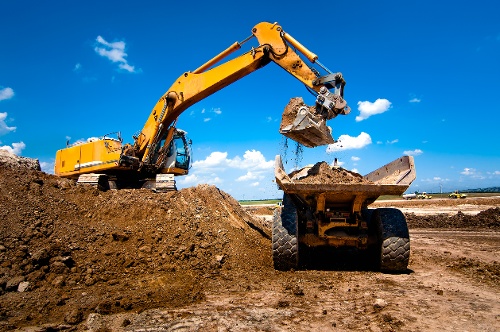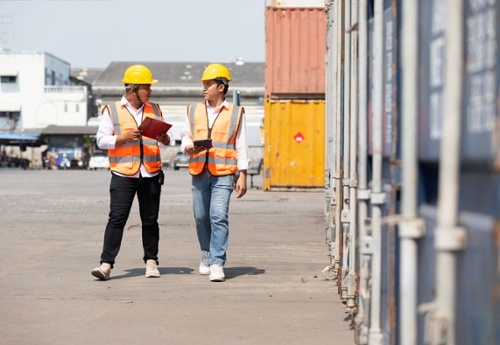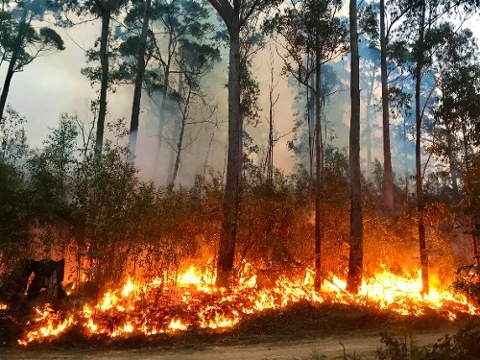When carrying out a risk assessment on your hazardous chemical stores, you need to consider off-site risks that aren’t part of your own operations. Off-site risks can contribute to the physical safety of your workplace by triggering fires, explosions and chemical reactions. This post will be looking at a range of potential off-site risks that could impact the hazardous chemicals stored at your workplace. We’ll also be detailing key things to consider when you’re conducting your next chemical risk assessment, so you can identify and control these off-site risks.
NOTE: We’ve included some extreme examples in the article — actual events triggered by off-site activities or the weather — to help you understand the potential for danger. In many instances, control measures will include liaising with the relevant community groups and local business, while factoring the risks into a Chemical Emergency Plan.
Activities and Installations on Adjacent Properties
Nearby workplaces and neighbouring properties can increase the level of risk to your own workplace. Activities and installations on adjacent properties can also introduce new hazards to your site.

The work conducted on neighbouring properties can contribute to the chemical risks on your site.
We suggest considering the following points in your chemical risk assessment:
- Combustible materials located within proximity to your job site. Things like paper, refuse, combustible liquids, firewood, construction supplies, wood pallets, even vegetation and forests could fuel a fire (or increase the intensity and range).
- Work operations of neighbouring properties and agricultural lands: pesticide spraying, poor chemical storage and handling, heavy machinery, industrial heat and emissions.
- Construction, earthworks, demolition, drilling and similar work on neighbouring sites that could cause structural damage to your buildings, pipework, or plant.
- Vehicles and heavy machinery from outside sources breaching the site perimeter: car or truck accident, plane crash, backhoe breaching a fence/pillar/posts.
- Fireworks from a music festival, concert or party.
- An emergency situation, such as a fire, explosion or chemical spill, that could impact your site.
- Incompatible chemicals or dangerous goods stored on nearby premises that could ignite, detonate or decompose. These materials could cause a dangerous incident on your own job site; they could also create an accident or fire at their property.
Like to learn more about incompatible chemicals?
IMPORTANT: Don’t forget to consider how a chemical emergency could impact neighbouring schools, hospitals, aged care facilities, residential zones, offices, shopping centres and other businesses. Ensure any outside chemical stores are separated from public and protected places, to minimise the impact of a potential chemical hazard.
Contractors, Suppliers and Transport Vehicles
Off Site workers, contractors and delivery drivers can introduce new hazards to your site if protocols aren’t followed or activities aren’t properly supervised.

Contractors, suppliers and delivery staff must be educated so they don't introduce new chemical hazards to your workplace.
Considering the following activities that may impact the safety of your hazardous chemical stores:
- Site visitors or contractors bringing contraband substances, electronics, and potential ignition sources onto the job site.
- Transport drivers leaving trucks or delivery vehicles running near bulk fuel tanks, chemical stores or decanting stations.
- Local farmers who are delivering grain or walking through grain intake areas with electronic devices.
- Trade contractors bringing faulty electrical tools or incompatible appliances into HAZCHEM zones.
- Fly-in workers unfamiliar with the site carrying out maintenance work or repairs that produce heat and sparks near chemical stores.
- Delivery drivers throwing gas bottles over the side of a truck or rolling them along the ground.
- Supplier employees operating heavy machinery, forklifts, or trucks near chemical stores.
- Unauthorised visitors or contractors accessing your HAZCHEM stores and gas bottle cages.
REMEMBER: If you’re carrying hazardous chemicals at your site, you must ensure that only authorised personnel, who are properly trained in chemical safety, have access to the stores. This includes access to the areas surrounding the stores. Incidents such as fire, flashback and explosion can occur if people bring ignition sources or incompatible substances into chemical storage and handling areas.
Weather Patterns and Natural Disasters
How could extreme weather, such as floods, cyclones, heatwaves or wild storms, impact the safety of your hazardous chemical stores?

Extreme weather, changes in temperature and natural disasters can greatly impact the safety of your outdoor chemical stores.
If you have outdoor chemical stores, you should consider if they could be damaged by wind, hail, lightning or heavy rain. Outdoor stores, bulk package stores and high-volume chemical storage tanks have the potential to cause catastrophic environmental and property damage – if they are adversely affected by extreme weather conditions.
Changes in temperature can also affect the chemical and physical properties of most hazardous substances — including their explosive range.
Potential hazards include:
- Chemical stores penetrated by flying tree branches or building debris.
- Lightning strikes in and around chemical stores.
- Floods uprooting buildings and chemical tanks.
- Warning placards and signs blown away.
- Reduced visibility in heavy rain or fog.
- Chemical overheating during heatwaves.
- Damage from a natural disaster isolates the job site from critical suppliers and maintenance crews.
EXTREME EXAMPLE: During a flood in Egypt, flammable liquids were released from a damaged aviation fuel depot and were ignited by a lightning strike. The burning fuel was then dispersed through villages and towns by floodwaters — many people were killed, and the economic damage was enormous.
Equipment, Power and Supply Failures
Natural disasters, floods and storms can also cause lengthy power-cuts and water shortages, but this can also happen due to scheduled maintenance.

Consider how a cut to your water supply or a change in water pressure may affect your operations.
Your risk management plan should also factor unplanned machinery breakdowns and power failures.
More specifically:
- Onsite or offsite caused power failures that impact ventilation systems (including chemical cabinet ventilation systems, exhaust fans and fume hoods); air monitoring and exposure alarms.
- Power failures that affect temperature controlled chemical stores.
- Cuts to water supply, or reduction in water pressure.
- Machinery faults and breakdowns.
- Suppliers failing to deliver fuel and replacement chemicals
REAL WORLD EXAMPLE: A power outage at an aluminium processing plant stopped all the pumps — including the pumps controlling heat exchange and cooling. Temperatures and pressure increased until the pressure relief valves overloaded. A number of vessels containing corrosive chemicals exploded, injuring 29 employees and causing extensive property damage.
Protecting Your Hazardous Chemical Stores
We hope you now have a deeper understanding of how events, activities and people outside of your business can impact the chemical safety of your site. To learn more about this topic, we encourage you to access our free eBook.
How To Manage The Risk Of Hazardous Chemicals In The Workplace explains how to incorporate these external risks and hazards into your risk management plan. It also gives you a step-by-step guide to improving chemical compliance in your own business. Grab your copy of our eBook today by simply clicking on the image below.
Joining the team as a Dangerous Goods Storage Consultant, Melissa Hampton became Storemasta's Marketing Manager in late 2021. With extensive knowledge and experience in chemical compliance, Melissa is responsible for leading the Marketing team and helping shape their marketing strategy. In her spare time, you can find Melissa hiking, swimming and enjoying the great outdoors in beautiful north-west Tasmania.
